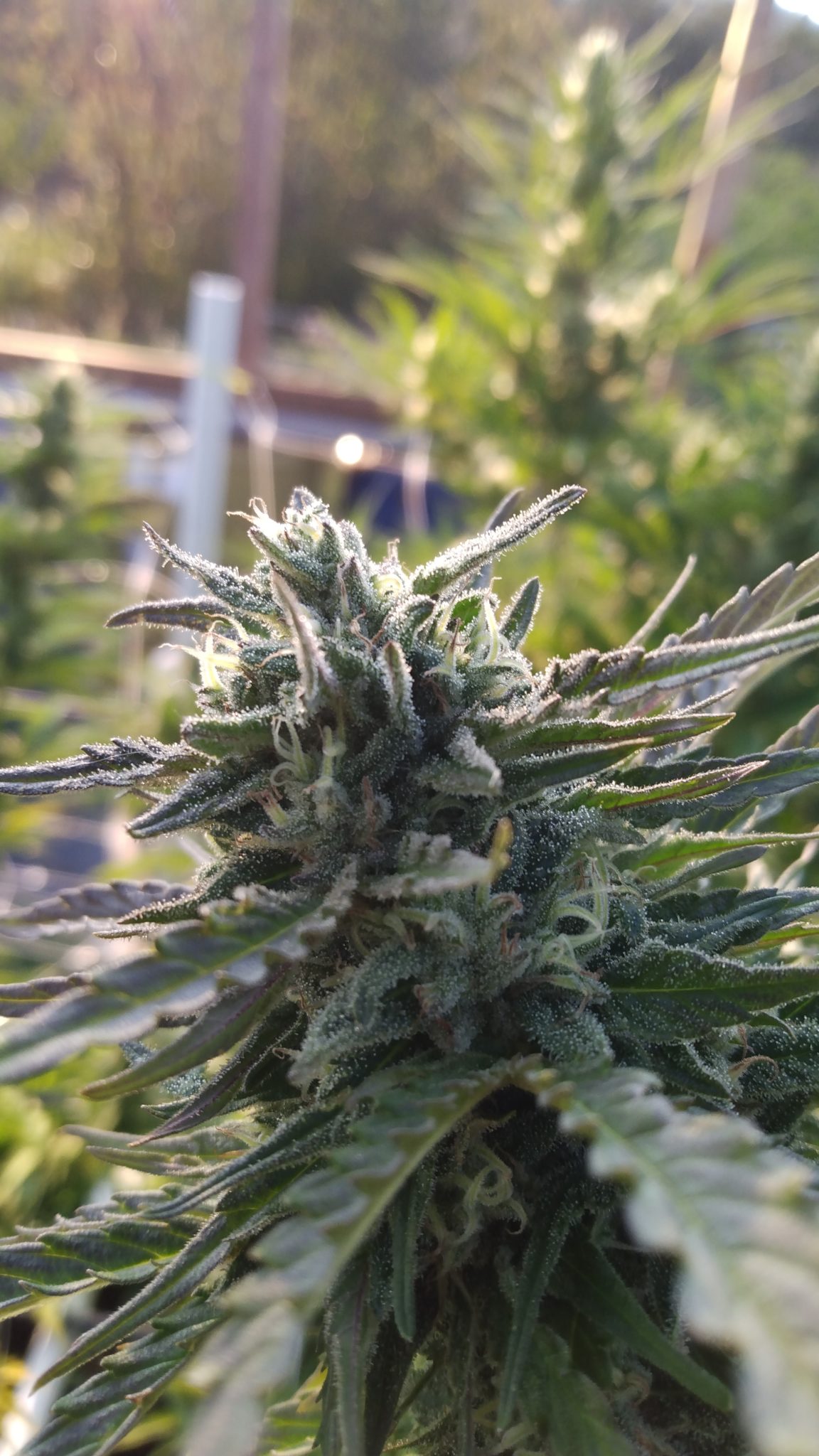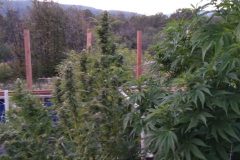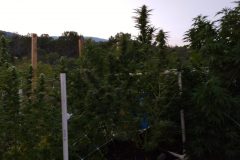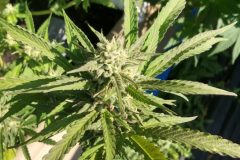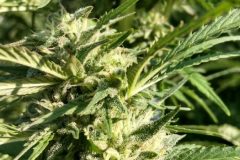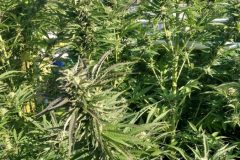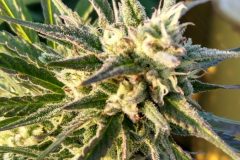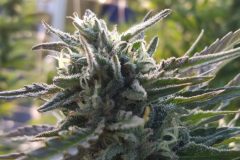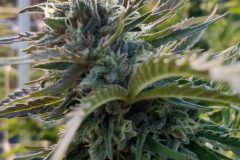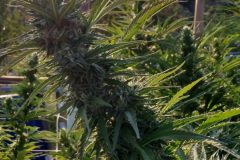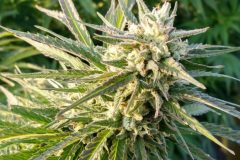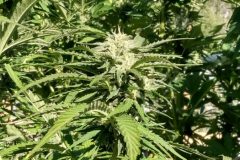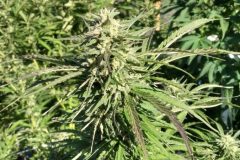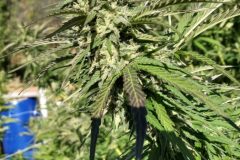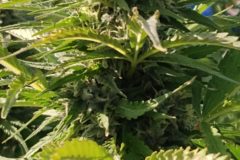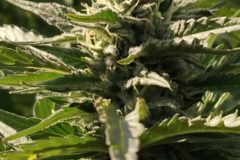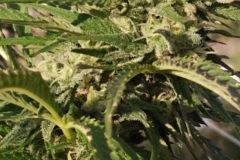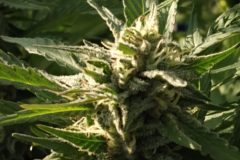Cannabis is an annual, dioecious, flowering herb. The leaves are palmately compound or digitate, with serrate leaflets.[12] The first pair of leaves usually have a single leaflet, the number gradually increasing up to a maximum of about thirteen leaflets per leaf (usually seven or nine), depending on variety and growing conditions. At the top of a flowering plant, this number again diminishes to a single leaflet per leaf. The lower leaf pairs usually occur in an opposite leaf arrangement and the upper leaf pairs in an alternate arrangement on the main stem of a mature plant.
The leaves have a peculiar and diagnostic venation pattern that enables persons poorly familiar with the plant to distinguish a cannabis leaf from unrelated species that have confusingly similar leaves (see illustration). As is common in serrated leaves, each serration has a central vein extending to its tip. However, the serration vein originates from lower down the central vein of the leaflet, typically opposite to the position of, not the first notch down, but the next notch. This means that on its way from the midrib of the leaflet to the point of the serration, the vein serving the tip of the serration passes close by the intervening notch. Sometimes the vein will actually pass tangent to the notch, but often it will pass by at a small distance, and when that happens a spur vein (occasionally a pair of such spur veins) branches off and joins the leaf margin at the deepest point of the notch. This venation pattern varies slightly among varieties, but in general it enables one to tell Cannabis leaves from superficially similar leaves without difficulty and without special equipment. Tiny samples of Cannabis plants also can be identified with precision by microscopic examination of leaf cells and similar features, but that requires special expertise and equipment.
Reproduction
All known strains of Cannabis are wind-pollinated[14] and the fruit is an achene.[15] Most strains of Cannabis are short day plants,[14] with the possible exception of C. sativa subsp. sativa var. spontanea (= C. ruderalis), which is commonly described as “auto-flowering” and may be day-neutral.
Cannabis is predominantly dioecious,[14][16] having imperfect flowers, with staminate “male” and pistillate “female” flowers occurring on separate plants.[17] “At a very early period the Chinese recognized the Cannabis plant as dioecious”,[18] and the (c. 3rd century BCE) Erya dictionary defined xi 枲 “male Cannabis” and fu 莩 (or ju 苴) “female Cannabis“.[19] Male flowers are normally borne on loose panicles, and female flowers are borne on racemes.[20]
Many monoecious varieties have also been described,[21] in which individual plants bear both male and female flowers.[22] (Although monoecious plants are often referred to as “hermaphrodites”, true hermaphrodites – which are less common in Cannabis – bear staminate and pistillate structures together on individual flowers, whereas monoecious plants bear male and female flowers at different locations on the same plant.) Subdioecy (the occurrence of monoecious individuals and dioecious individuals within the same population) is widespread.[23][24][25] Many populations have been described as sexually labile.[26][27][28]
As a result of intensive selection in cultivation, Cannabis exhibits many sexual phenotypes that can be described in terms of the ratio of female to male flowers occurring in the individual, or typical in the cultivar.[29] Dioecious varieties are preferred for drug production, where the female flowers are used. Dioecious varieties are also preferred for textile fiber production, whereas monoecious varieties are preferred for pulp and paper production. It has been suggested that the presence of monoecy can be used to differentiate licit crops of monoecious hemp from illicit drug crops.[23] However, sativa strains often produce monoecious individuals, probably as a result of inbreeding.
